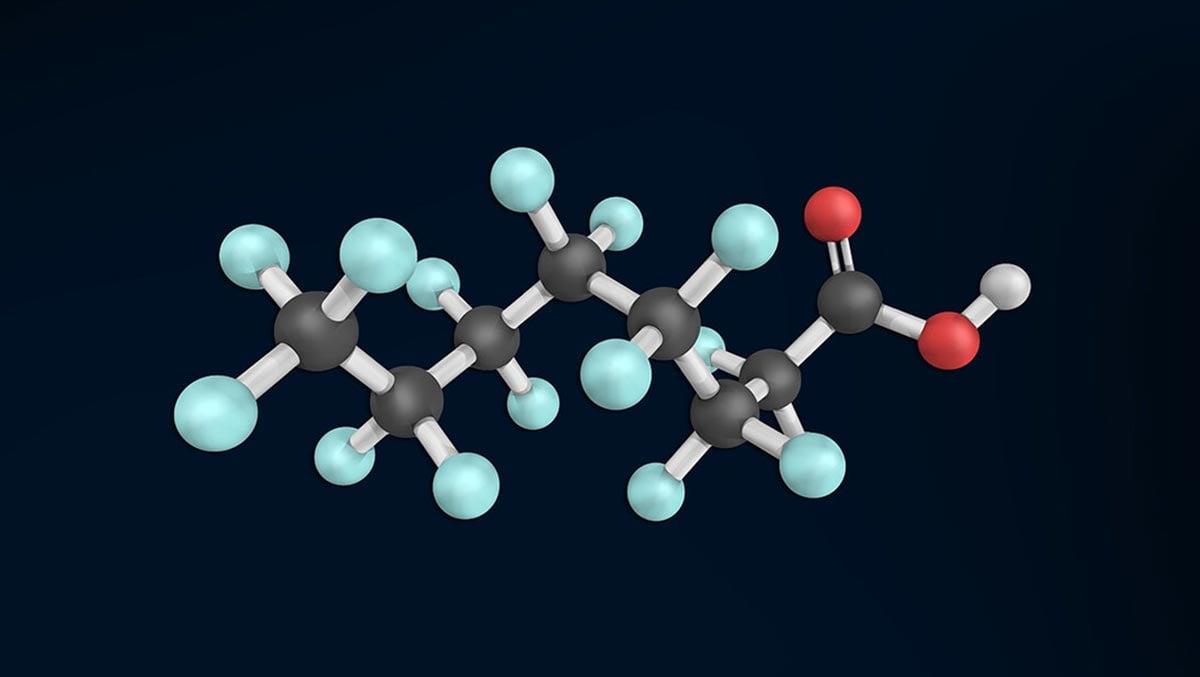💧 A pollutant-eating bacteria discovered by chance
Follow us on Google News (click on ☆)
Researchers from the University of Nebraska-Lincoln made a surprising discovery while studying microbial interactions with these stubborn pollutants. Their work focused on Rhodopseudomonas palustris, a photosynthetic bacterium widely found in nature. This microorganism possesses the remarkable ability to absorb perfluorooctanoic acid (PFOA), one of the most persistent PFAS compounds, by directly incorporating it into its cell membrane according to observations published in Environmental Science: Advances.

Molecular representation of a perfluorooctanesulfonic acid, categorized as PFAS.
Credit: University of Nebraska - Lincoln
Laboratory experiments demonstrated that this bacterium could remove approximately 44% of the PFOA present in its environment within twenty days. However, a significant portion of the chemical was subsequently released, likely following cell lysis - a process of cell wall rupture. This observation highlights both the potential and current limitations of this biological approach for capturing these recalcitrant substances.
This research opens encouraging perspectives for the development of biological decontamination solutions. Scientists are now exploring synthetic biology approaches and microbial engineering to improve PFAS retention by microorganisms, and potentially enable their complete biological transformation. This work could lead to treatment methods for contaminated water that are more economical and less energy-intensive than current techniques.
PFAS: pollutants that stand the test of time
Per- and polyfluoroalkyl substances, more commonly known as PFAS, constitute a family of several thousand synthetic chemical compounds characterized by their extremely stable carbon-fluorine bonds. This exceptional stability gives them remarkable resistance to thermal, chemical, and biological degradation, which explains their persistence in the environment and their nickname 'forever chemicals'.
These compounds have been massively used since the 1940s in numerous industrial and domestic applications due to their properties. Their molecules feature both a hydrophobic part that repels water and a lipophobic part that repels fats, making them particularly useful as anti-adhesive, waterproofing, and foaming agents.
Contamination by PFAS represents a major health concern because these substances can accumulate in living organisms and persist for decades in the environment. Their mobility in groundwater and their ability to travel long distances explain their detection on a global scale, including in regions remote from contamination sources.
Current research focuses on developing effective methods to eliminate these pollutants from aquatic ecosystems, with growing interest in biological approaches that could offer more sustainable and less expensive solutions than conventional physico-chemical treatments.